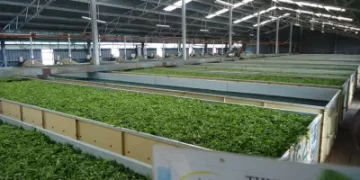Since the cost of transporting maize from the source markets has increased by 150 percent, expensive imports have dashed hopes for cheaper flour.

Transporters are now charged the equivalent of Sh1,500 for each bag of corn brought in from Malawi or Zambia, up from Sh600 previously. This raises the cost of a 90-kilogram bag’s arrival in Nairobi to Sh6,000.
Since the start of the year, the price of flour has been rising throughout the nation; this week, it surpassed Sh200, a first in the country’s history as the shortage of the staple commodity remained.
Manufacturers of animal feeds, who import the same standard maize for feeds, claim that the high price has discouraged the majority of their members from shipping.
“Maize is relatively cheaper in Zambia and Malawi but when you factor in the transport cost, it becomes costly,” said John Gathogo, the publicity secretary, Kenya Feeds Manufacturers.
The high cost of transport is attributed to expensive fuel and the fact that trucks have to return empty to their respective countries.
Kenya was targeting to get cheap maize outside of the East African Community (EAC) region when it opened up the imports last month to address the current high cost of flour.
In Uasin Gishu, Eldoret Grain Millers has advised farmers that it is buying maize at Sh6,500 for a 90-kilo bag in order to attract any available local stocks from farmers.
Millers and feed manufacturers do not have alternatives other than to import expensive grain in order to keep their operations running as there are no local stocks available in the country.
“We do not have local maize in supply at all and the only alternative at the moment is importing, which are not as cheap as we had thought because of charges involved in shipping,” said Ken Nyagah, chairperson of United Grain Millers Association.
The Ministry of Agriculture opened an import window last month for produce coming in outside of the EAC region, however, millers have been unable to ship in the grain due to the high global cost of the commodity occasioned by the ongoing war between Russia and Ukraine.
The high cost of imported maize means that consumers will have to contend with expensive flour until the next harvesting season in October, as the short rain crop, which normally comes to the market around July did not perform well on the back of drought.
Source: Business Daily










































